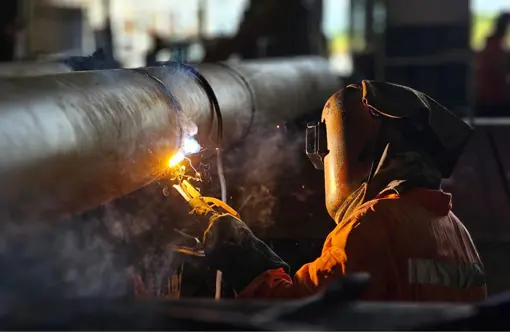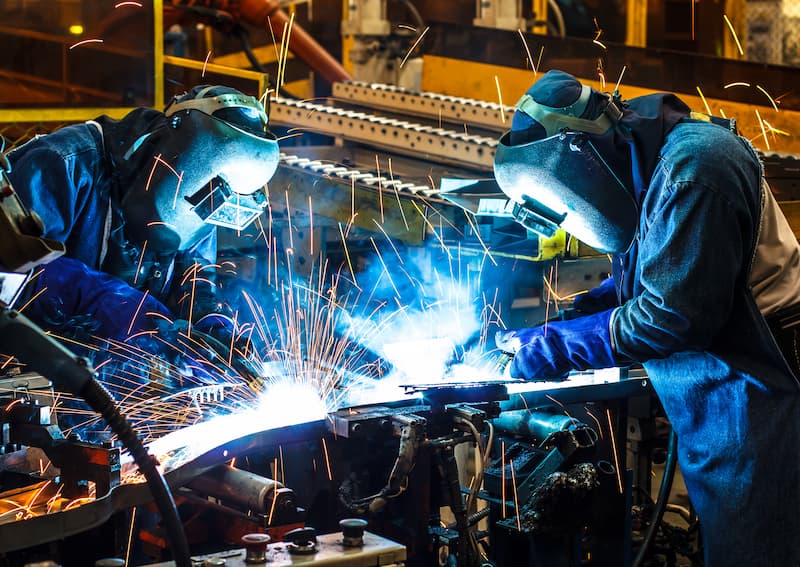Everything about Welding: Key Insights Into Techniques and Ideal Practices for Success
Welding incorporates a selection of strategies, each suited for details materials and applications. Recognizing these techniques, such as GMAW, SMAW, and TIG, is essential for achieving ideal outcomes. The ideal equipment and safety techniques can not be forgotten. As preparation and troubleshooting play crucial functions in the welding process, understanding these aspects can greatly boost the high quality of the last item. What are the essential variables that assure a successful weld?
Comprehending Different Welding Strategies
Welding methods include a variety of methods, each matched to certain applications and materials. Among one of the most typical strategies are Gas Metal Arc Welding (GMAW), Secured Metal Arc Welding (SMAW), and Tungsten Inert Gas Welding (TIG) GMAW, likewise called MIG welding, is preferred for its speed and versatility, making it optimal for slim materials. SMAW, or stick welding, is preferred for its simpleness and efficiency in exterior settings, especially with thicker metals. TIG welding offers accuracy and control, making it suitable for elaborate job and non-ferrous metals (Montana Mobile Welding and Repair Fabrication). Each technique has its special benefits and considerations, enabling welders to pick the very best approach based on the job's demands, product kind, and desired results. Recognizing these techniques is crucial for successful welding
Necessary Welding Tools and Devices
While various welding methods require certain abilities, the right equipment and tools are similarly vital for accomplishing high quality results. Crucial welding equipment includes welding devices, which differ depending upon the method-- such as MIG, TIG, or stick welding. Safety equipment, consisting of gloves, aprons, and safety helmets, guarantees safety and convenience throughout the process. In enhancement, clamps and components help protect materials in position, making certain accuracy in welds. Consumables like welding poles, wire, and protecting gas are likewise critical components that influence the top quality of the weld. Furthermore, tools such as mills and cutters promote surface prep work and post-weld ending up, contributing to a specialist result. Investing in top notch equipment eventually enhances the efficiency and performance of welding jobs.
Security Practices in Welding
Appropriate safety and security methods are crucial in the welding sector to safeguard workers from possible threats. Welders have to put on suitable individual safety devices (PPE), including helmets with appropriate shading, gloves, and flame-resistant garments. Sufficient air flow is crucial to decrease direct exposure to damaging fumes and gases created during the welding process. Additionally, employees must be educated in the proper handling of welding devices to avoid accidents. Fire precaution, such as maintaining flammable materials far from the welding location and having fire extinguishers easily available, are needed. Routine inspections of equipment and work spaces can assist determine potential risks before they lead to mishaps. By sticking to these safety techniques, welders can produce a much safer working setting and lessen threats related to their profession.
Readying Materials for Welding
Preparing products for welding is an essential step that considerably affects the top quality and integrity of the final item (Welding). Appropriate prep work includes cleaning up the surface areas to get rid of impurities such as dirt, rust, and oil, which can compromise the weld. Techniques such as grinding, fining sand, or making use of solvents are frequently used to accomplish a clean surface. Furthermore, making certain that the materials mesh snugly is necessary; voids can lead to weak welds. It's likewise vital to take right into account the alignment and positioning of the parts, as this will influence the convenience of welding and the final outcome. Picking the ideal filler material and ensuring compatibility with the base steels is important for attaining strong, long lasting welds.
Tips for Achieving High-Quality Welds
Attaining premium welds requires interest to information and adherence to ideal methods throughout the welding procedure. Correct joint preparation is crucial, guaranteeing surfaces are totally free and tidy from contaminants. Choosing the ideal filler material and welding method based upon the base metals is vital for ideal bonding. Keeping constant traveling speed and angle while welding can promote and prevent problems uniformity. In addition, controlling warm input is vital; extreme warmth can cause bending and weakened joints. On a regular basis inspecting the welds during the process enables for instant changes if necessary. Employing suitable post-weld therapies, such as cleaning and stress alleviation, can boost the durability and integrity of the weld, inevitably making sure an effective outcome.
Fixing Common Welding Issues
Welding commonly provides challenges that can affect the top quality and integrity of the end product. Common concerns such as porosity, inconsistent weld grains, and getting too hot can occur, each calling for details fixing strategies. Understanding these troubles is vital for welders to enhance their skills and accomplish suitable results.
Porosity Issues Explained
Although porosity can frequently be ignored, it stays a critical issue in welding that can compromise the honesty of an ended up product. Porosity refers to the existence of small gas pockets within the weld grain, which can weaken the joint and lead to early failure. This trouble commonly arises from pollutants, wetness, or inappropriate shielding gas coverage throughout the welding process. To mitigate porosity, welders you can try this out must confirm that the base products are dry and clean, utilize ideal securing gases, and preserve consistent welding criteria. Consistently inspecting the tools and environment can additionally help recognize prospective concerns prior to they show up in the weld. Addressing porosity properly is essential for achieving strong, sturdy welds that meet quality requirements.

Irregular Weld Beads
Irregular weld beads can considerably influence the top quality and toughness of a finished product. Different factors add to this concern, consisting of incorrect travel speed, inaccurate amperage settings, and irregular electrode angles. When the welder moves too rapidly, a grain may appear slim and lack infiltration, while relocating too gradually can trigger extreme buildup. In addition, utilizing the incorrect amperage can cause either undercutting or too much spatter, both of which compromise weld honesty. The welder's strategy, such as inconsistent torch activity, can additionally bring about unequal grain look. To reduce these problems, welders need to concentrate on keeping stable, regulated movements and ensuring proper tools settings to attain uniformity in their welds. Uniformity is essential to accomplishing solid and dependable welds.
Getting Too Hot and Bending Issues
Excessive heat throughout the welding procedure can result in substantial overheating and deforming issues, influencing the structural stability of the work surface. These troubles usually show up as distortion, which can jeopardize positioning and fit-up, making additional assembly testing. Aspects adding to overheating consist of the option of welding criteria, such as voltage and travel speed, as well as the kind of product being bonded. To reduce these concerns, welders ought to preserve constant traveling speed and ideal warm input while checking the workpiece temperature level. Furthermore, preheating or post-weld warmth therapy can aid relieve stresses caused by fast cooling - Belgrade Fabrication. Regular examination and adherence to best methods are important in protecting against overheating and guaranteeing the long life and reliability of bonded frameworks
Often Asked Inquiries
What Are the Profession Opportunities in the Welding Sector?
The welding market uses diverse job chances, including placements as welders, designers, instructors, and assessors. Professionals can function in manufacturing, building, aerospace, and vehicle industries, taking advantage of solid demand and affordable wages in numerous functions.
How Can I Improve My Welding Rate Without Compromising Quality?
To improve welding speed without giving up top quality, one need to practice reliable methods, maintain equipment, maximize setups, and boost hand-eye control. Regular training and looking for responses can also greatly add to achieving faster, premium welds.
What Certifications Are Offered for Welders?
Numerous accreditations exist for welders, including those from the American Welding you could try this out Society (AWS), the National Facility for Building And Construction Education and Research Study (NCCER), and various industry-specific companies. These qualifications enhance employability and show skill original site proficiency.
Exactly How Does Welding Influence the Qualities of Metals?
Welding affects the residential properties of steels by altering their microstructure, which can result in modifications in solidity, toughness, and ductility. Warmth input and air conditioning prices throughout the process greatly impact these material features.
Can I Bonded Dissimilar Metals With Each Other?

Comments on “Steps for perfect fusion with Montana Mobile Welding and Repair Belgrade Fabrication”